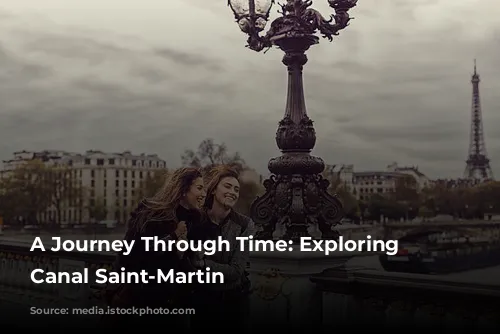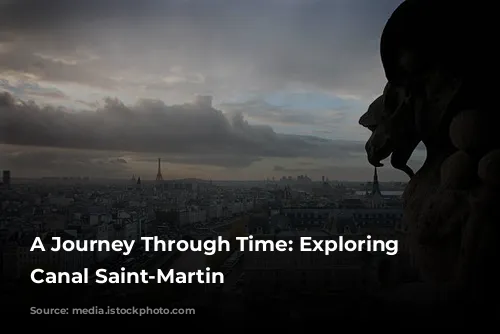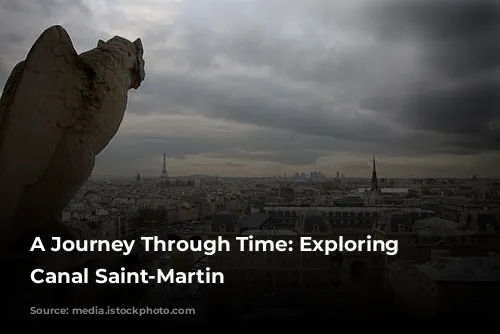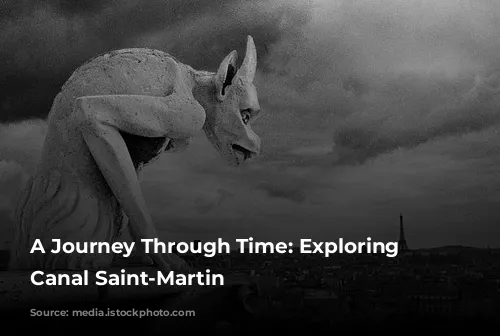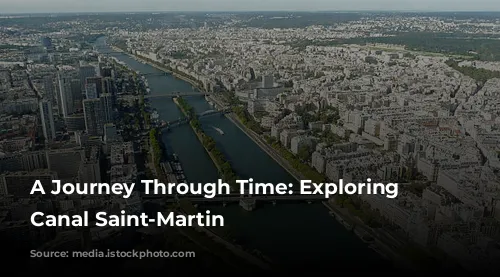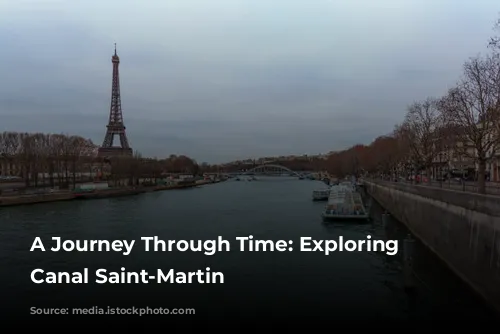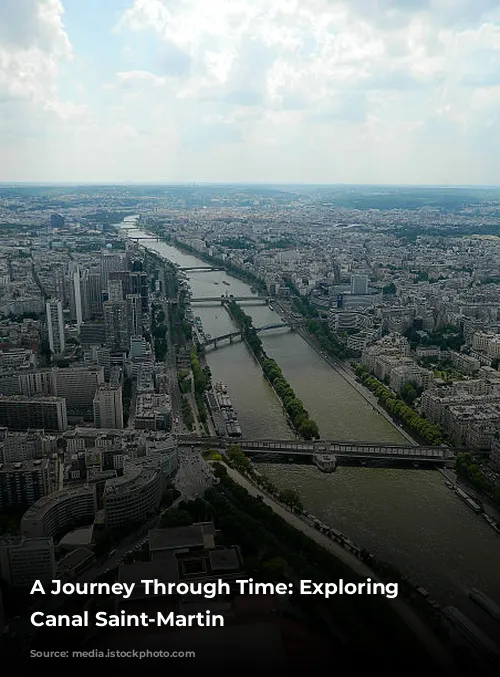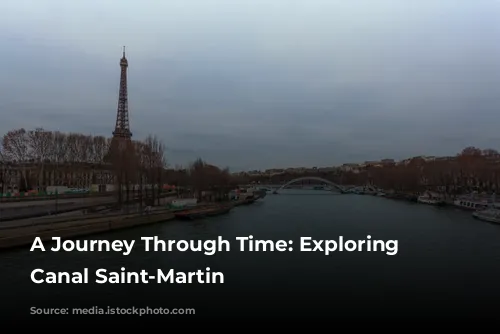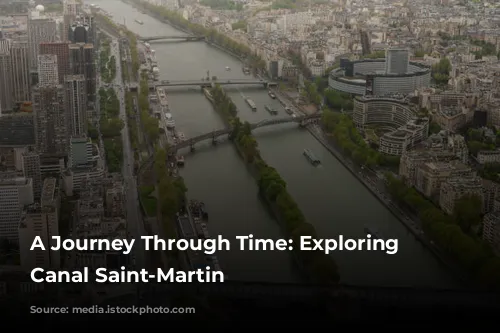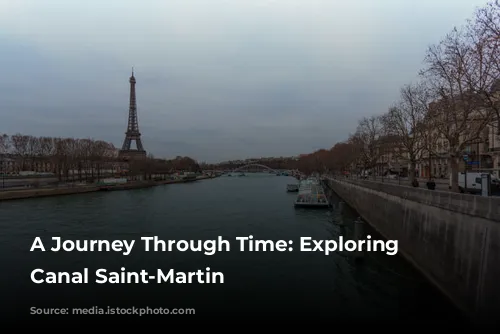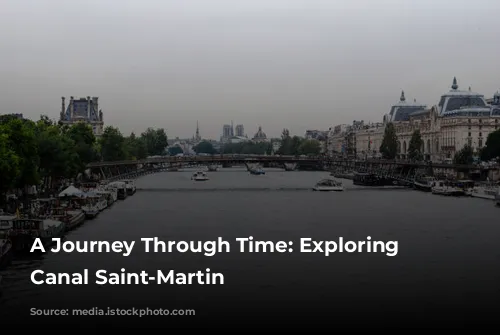The Canal Saint-Martin, a picturesque waterway snaking through the heart of Paris, boasts a captivating history and an undeniable charm. This 4.6-kilometer-long canal seamlessly connects the Canal de l’Ourcq to the mighty River Seine. While its full length stretches for nearly 3 kilometers, a significant portion was cleverly covered in the mid-19th century, paving the way for spacious boulevards and vibrant public spaces. Every decade or so, the canal undergoes a thorough cleaning and drainage, revealing hidden treasures and forgotten trinkets amongst the tons of discarded objects. It’s a Parisian ritual, a chance to uncover history’s whispers within the depths of the canal.
A Lifeline for a Growing City
Gaspard de Chabrol, the astute prefect of Paris, envisioned a solution to the city’s growing pains. The idea? To create a lifeline, a canal connecting the city to the River Ourcq, located 100 kilometers to the northeast. This grand vision aimed to quench the thirst of a burgeoning population, providing them with fresh water, thus combatting diseases such as cholera and dysentery. The canal was a multi-purpose marvel, supplying water to Parisian fountains, including the iconic Elephant of the Bastille, and facilitating street cleaning efforts. The ambitious project, ordered by Napoleon I in 1802, took over two decades to complete, funded by a novel tax levied on wine.
A Network of Trade and Transportation
Beyond its essential role in supplying water, the Canal Saint-Martin played a crucial role in the city’s economic tapestry. It served as a conduit for transporting essential goods, such as grain, building materials, and other commodities, via canal boats. Two bustling ports, Port de l’Arsenal and the Bassin de la Villette, sprang up along the canal, becoming hubs for unloading these boats. The canal, a silent witness to the city’s growth, facilitated the movement of goods and the bustling life of a thriving metropolis.
A Narrow Escape and a New Beginning
By the 1960s, the canal’s role in transportation had diminished, its waters no longer bustling with barges. It was a time when its very existence hung in the balance. The canal narrowly escaped the fate of being filled in, replaced by a sprawling highway. Thankfully, it persevered, its unique charm and historical significance recognized and preserved. The canal, a symbol of resilience and historical continuity, continued to flow, its future uncertain yet full of promise.
From Industrial Hub to Parisian Paradise
Today, the Canal Saint-Martin stands as a testament to the city’s transformation, a vibrant tapestry woven with history and modernity. It is a beloved destination for Parisians and visitors alike, a place to relax, explore, and soak in the city’s unique atmosphere. Some choose to cruise along its tranquil waters in charming passenger boats, while others find delight in watching the boats navigate the series of intricate locks. The enchanting cast-iron footbridges add an architectural charm, while the canal banks come alive with the energy of bustling restaurants and bars. It is a haven for students, artists, and those seeking a moment of respite in the city’s energetic pulse.
A Canvas for Art and Inspiration
The Canal Saint-Martin has long captivated the hearts of artists, its timeless beauty and dynamic atmosphere serving as inspiration. Alfred Sisley, a renowned painter, captured its essence on canvas. In more recent times, the canal has become a vibrant canvas for street art, with intricate graffiti adorning its banks. The canal also hosts a significant multimedia art space, housed within the former municipal undertakers’ building at 104 rue d’Aubervilliers (‘104’).
A Recurring Theme in Art and Film
The Canal Saint-Martin has made its way into the fabric of popular culture, its presence felt in numerous films and songs. Jean Vigo’s cinematic masterpiece, L’Atalante (1934), captures the canal’s magic, as does Marcel Carné’s Hôtel du Nord (1938). The canal plays a pivotal role in Les Malheurs d’Alfred (1972), a film that showcases the canal’s melancholic charm. The canal’s iconic setting has also graced the screens of Amélie (2001), Mission: Impossible – Fallout (2018), and John Wick: Chapter 4 (2023). Édith Piaf’s iconic song, “Les mômes de la cloche”, evokes the canal’s spirit, while Courteeners capture its vibrant atmosphere in their song “The Dilettante”. The canal’s allure extends to literature, with Georges Simenon’s novel Maigret and the Headless Corpse (Maigret et le corps sans tête) being set in and around the canal.
A Journey Through Time and Place
The Canal Saint-Martin is more than a waterway; it is a journey through time, a vibrant artery that pulsates with life and history. It is a place to discover, explore, and appreciate the beauty of the past and the promise of the future. The canal, a testament to Parisian ingenuity and a symbol of the city’s enduring spirit, continues to flow, its waters reflecting the city’s ever-changing landscape.
